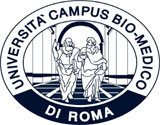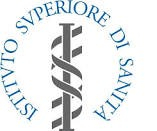
Objectives of the service
The uncontrolled contamination of ambulances with pathogenic microbes is a threat to public health (patients and healthcare operators) considering the many millions of ambulance operations performed globally each year.
UV-San exploits the well-known germicidal power of ultraviolet light emitted in the UV-C wavelengths range to sterilize surfaces inside the patient’s compartment of Ambulances that, coming into contact with the human body, are a persistent way for the transmission of viruses/bacteria.
UV-San is designed to be used several times a day after the transport of a patient, without the intervention of specialized operators and without the use of chemicals products. The ease of use allows to reduce significantly the downtime of ambulances with respect to standard sterilization procedures, increasing the usage time of ambulances.
The patented system for control of UVC radiation and ozone concentration ensures high level of safety to Health Operators and patients. In addition, GNSS and SATCOM technologies allow to keep a real-time and complete traceability of all the Sterilization Operations performed. These technical characteristics allow UV-San to offer two main features:
-
Continuous and Safe Sterilization of Ambulances, protecting healthcare operators, patients and hospitals from accidental contagion of pathogens, a problem worsened with the COVID-19 pandemic
-
Real-Time Remote Monitoring of Sterilization Level, supporting the national health system and the community in facing the spread of COVID-19 and other pathogens
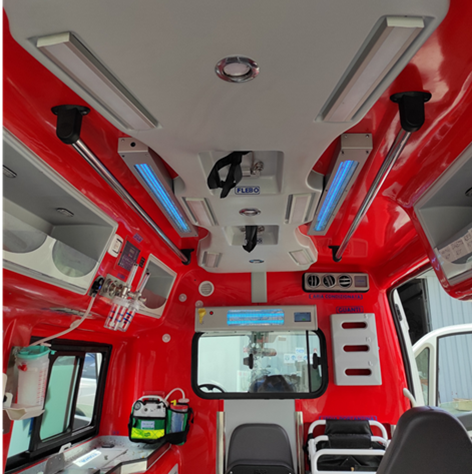
Users and their needs
UV-San is a sanitation system addressed to hospitals, operators of patients transport services and ambulance manufacturers with the aim of ensuring an effective and rapid disinfection of ambulances after the transport of a patient (targeting known, suspect or unknown COVID-19 patient).
Sanitizing ambulances is a time-consuming operation that can significantly reduce the availability of vehicles and the readiness for the timely treatment of COVID-19 patients. UV-San is designed to ensure an effective sanitation several times during a day, avoiding time-consuming sterilizations. Moreover, maintaining the geo-traceability of all the sanitations carried out, the system meets following needs of the targeted User Communities:
Patients transport service operators
-
Reduce the ambulances downtime due to standard sanitation operation
-
Provide a real-time traceability of sanitation performed and the sanitation level of the in service ambulances
Hospitals
-
Reduce the risk of environment contamination and contagion of patients and healthcare operators related to the transport of known, suspect and unknown COVID-19 patients
-
Improve traceability of potential contacts improving readiness in identification of contagions chain
Ambulance manufacturer
-
Provide new sanitation tools already integrated into ambulances
The pilot user for this activity is “Università Campus Bio-Medico” to validate UV-San in operational environment with the involvement of the “Heart Life Croce Amica”, Italian company providing ambulance service.
Service/ system concept
UV-San is a system designed for reducing the contagion risk coming from uncontrolled contamination of ambulances, providing an additional protection to Patients and Healthcare Operator and improving:
-
Sterilization level of Ambulances: the use of UV-San many times a day can limit the risks to have an ambulance as a potential means for diffusion of pathogens.
-
Situational Awareness: the real-time update of sterilization level of ambulances allows a more efficient management of vehicles fleet ensuring a healthcare service as safe as possible.
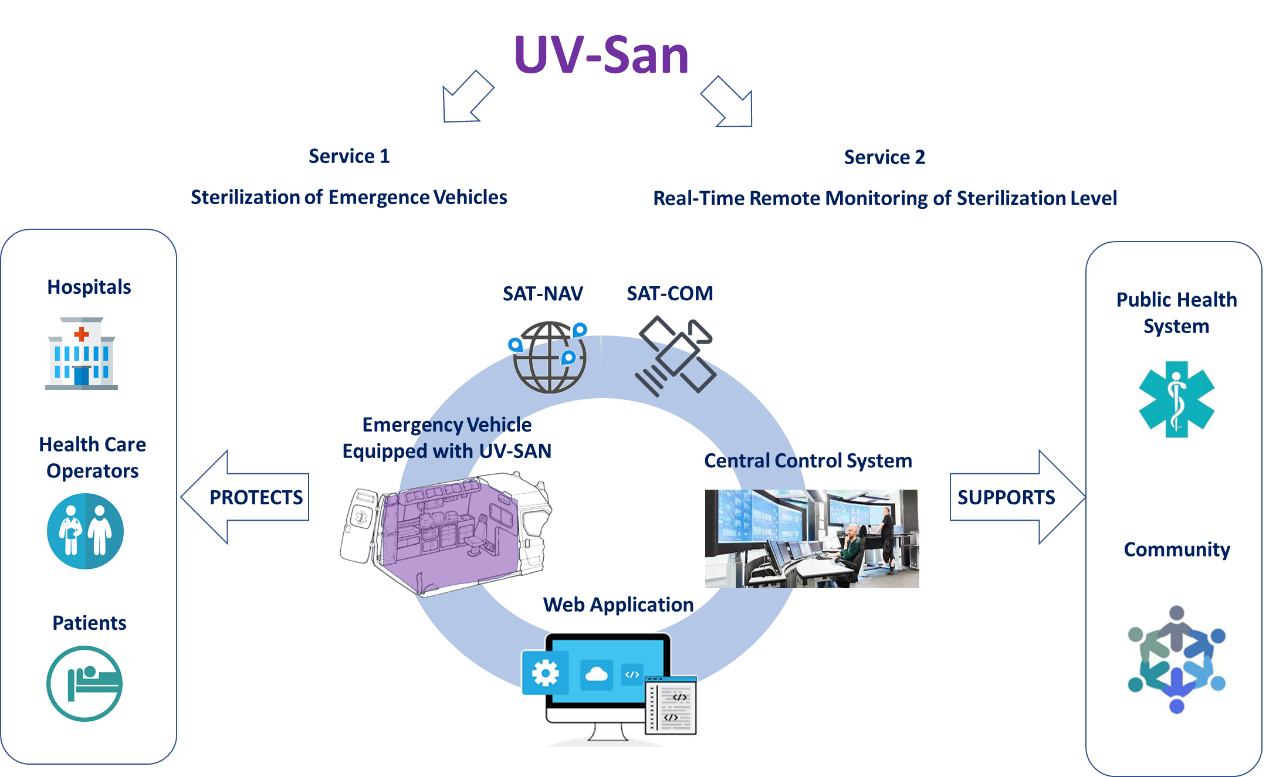
UV-San is composed by three main components:
- Sanitizing Equipment (SE) is installed in the ambulance that can be activated by the User to sterilize the patient’s compartment. During the Sterilization Operation, it monitors the internal environmental condition, especially ozone concentration and UVC radiation, and transmits data to the Central Control System.
- Central Control System (CCS) is installed in a control room and records all the operations performed by UVC-SE real-time monitoring and keeping traceability of sterilization level.
- Web Application (WEB-APP) provides access to the data collected by the system and allows the authorized User to visualize historical and real-time data. The WEB-APP is available at the following url: https://uvsan.org
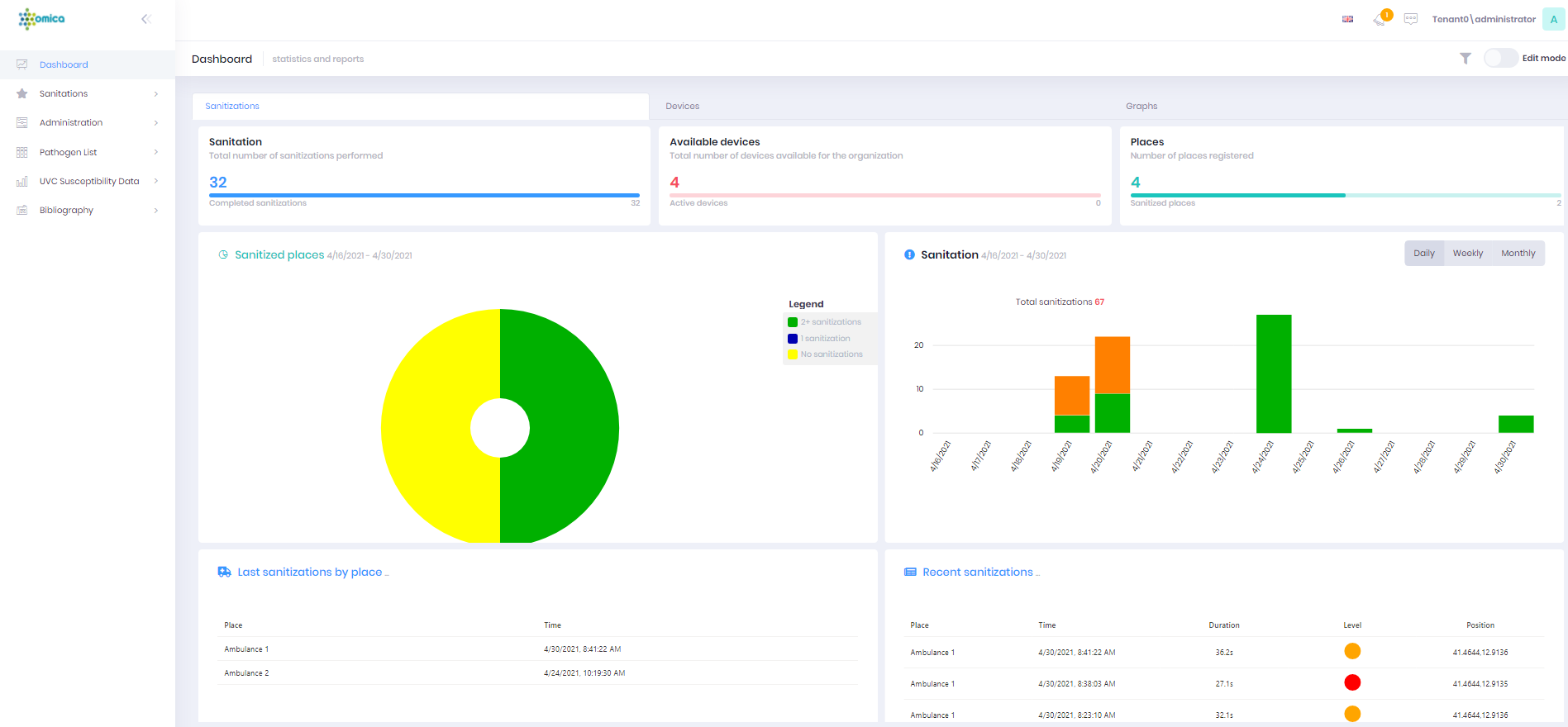
Space Added Value
The Satellite Navigation and Telecommunication technologies are the key-technologies enabling the Real-Time Remote Monitoring of Sanitizing Level of Emergency Medical Vehicles (EMV), allowing the geo-tracking of vehicles and the real-time transmission of data from any position.
UV-San integrates a positioning system that allows to record the time, position and during which path the sterilization operations were carried out, implementing a full geo-traceability of sterilization operations and sterilization level of each single EMV. The historical data can be used for subsequent analysis to evaluate the spreading process of pathogens if related to the conditions of patients transported by ambulance and, in case, to activate more stringent control procedures whenever the sanitation level of vehicles had been insufficient.
UV-San is also equipped with satellite communication system used as backup in case:
-
A real-time transmission with a very high level of continuity must be guaranteed. In this case, whenever the mobile network is not available, satellite communication would be activated.
-
The EMV are usually used in remote areas with no mobile connection coverage. SAT-COM guarantees real-time and reliable communication during the entire duration of a working shift.
Current Status
The Project started at the beginning of August 2020 and it concluded the validation and verification in December 2021. The sanitation procedure has been tested and verified by the Istituto Superiore di Sanita (ISS), the main centre for research, control and technical-scientific advice on public health in Italy. ISS is the project partner in charge to validate in laboratory environment the sterilization procedure against the Sars-Cov-2 virus.
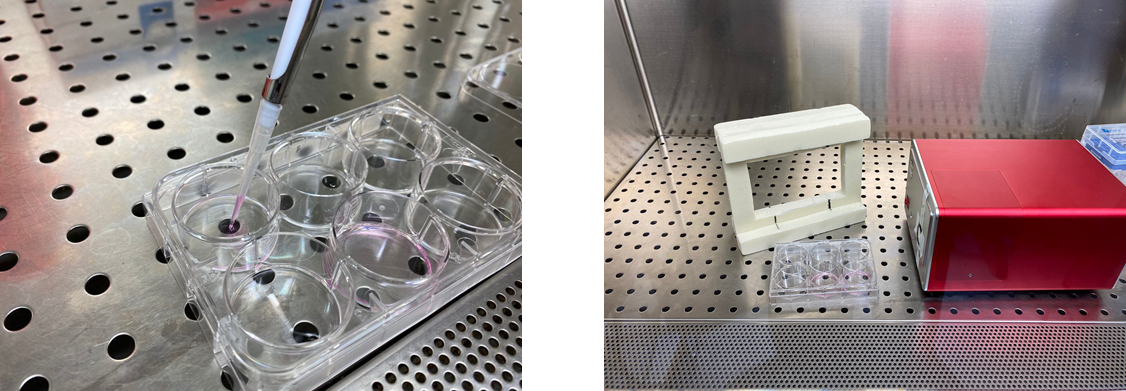
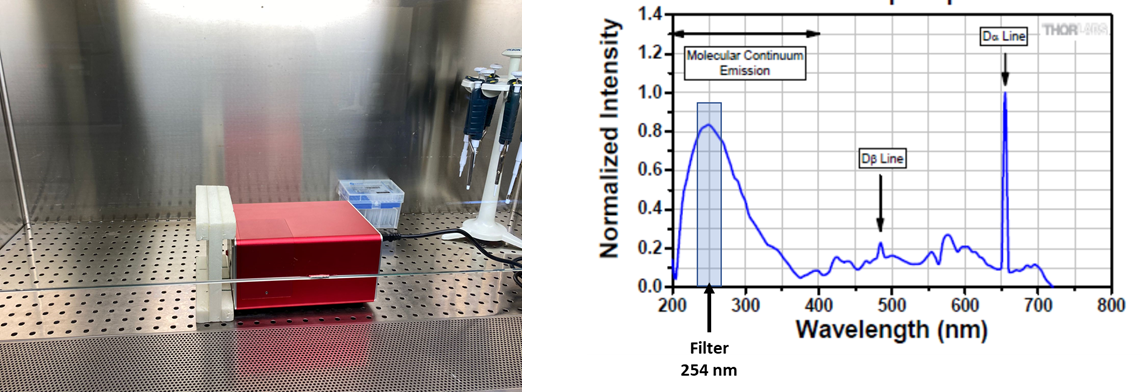
The virus susceptibility to UVC radiation has been measured for different material (plastic and metal) allowing to evaluate the irradiation time needed to inactivate the virus within the patient’s compartment of the ambulance.
The first unit of the UV-SAN system has been successfully deployed on the Ambulance of the Pilot User in June 2021 starting the trial phase. The system deployed in the patient’s compartment is shown in the picture below (left) during the test campaign together with the satellite modem (SAT-COM) installed on the lateral roof of the ambulance (right).
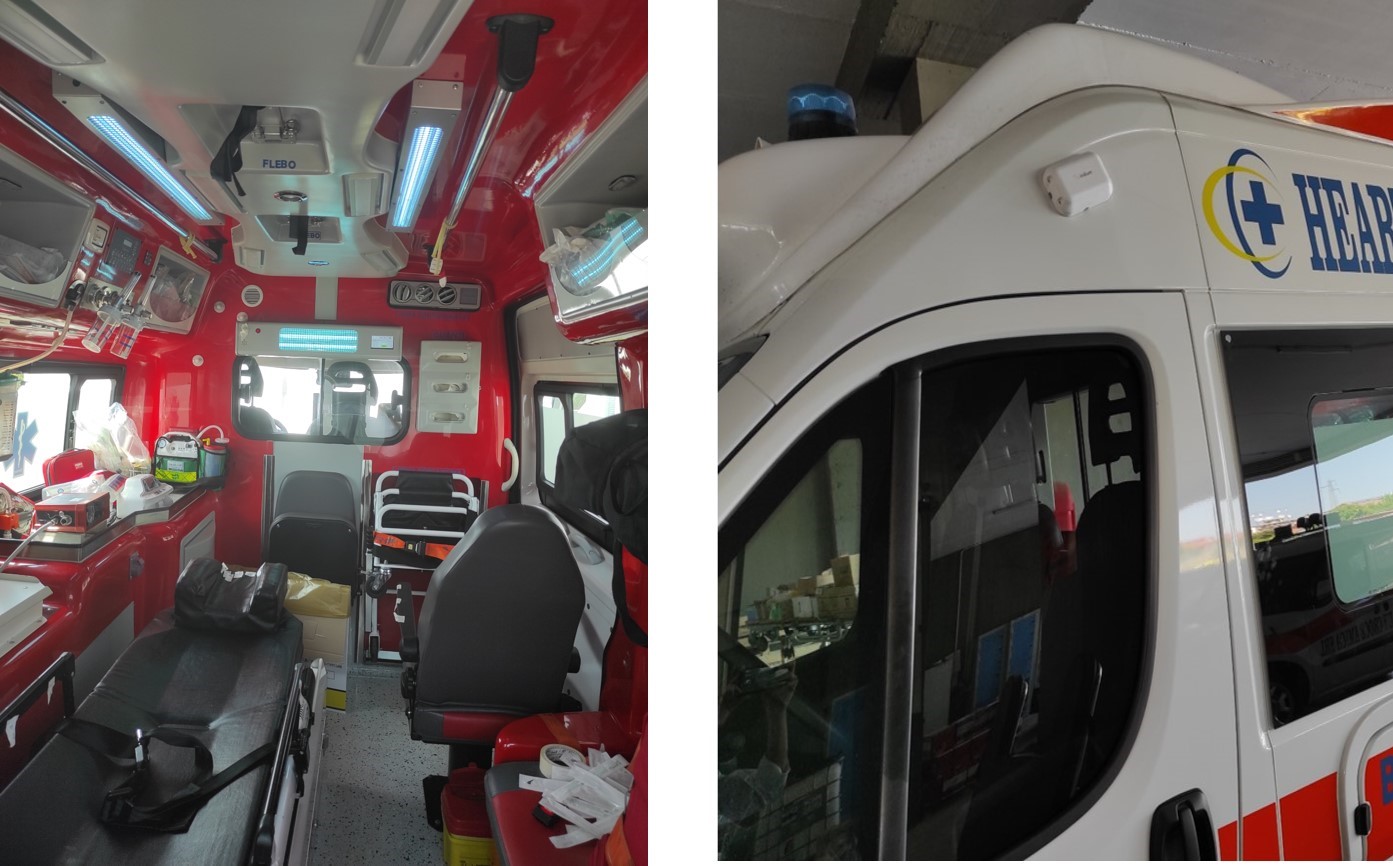
The verificaton in operative environment has be performed by the “Università Campus Bio-Medico” demonstrating the effectiveness of the system against Multi Drugs Resistant bacteria that are responsible for nosocomial infections (Klebsiella Pnemumoniae ESBL and Staphylococcus aureus MRSA).
Test Results showed that irradiation time less than 10 minutes are sufficient to inactivate bacteria in most of surfaces, while 30 minutes are sufficient to drastically reduce the concentration also in the least irradiated areas.
As part of the dissemination and business development UV-SAN has been exposed at the 20th International Exhibition for Rescue, Fire Fighting, Disaster Relief and Security held in October, the first international fair dedicated to the emergency organized after the pandemic period. The air allowed to get in contact with potential Customers at national and international level.
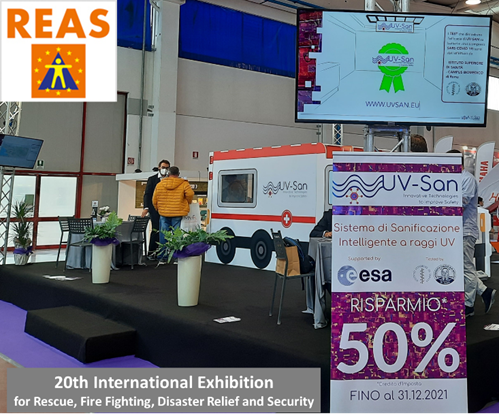
In addition, a dissemination strategy has been implemented with the scope to differentiate the UV-SAN system with respect to other solutions available on the market focusing on scientific and engineering value:
-
Publication of the scientific article “Ultraviolet Sanitizing System for sterilization of Ambulances fleets and for real-time monitoring of their sterilization level” on the international journal: “International Journal of Environmental Research and Public Health” - Special Issue "Technical and Organizational Solutions for Limiting the Spread of Pathogens in the Human Environment" (to be published in December 2021) - https://www.mdpi.com/journal/ijerph
-
Publication of a paper titled “System Engineering as an effective approach for the fast development of space downstream applications in the health sector” to the INternational Council of System Engineering (INCOSE) 32nd Annual International Symposium 2022 (article submitted and under evaluation)





